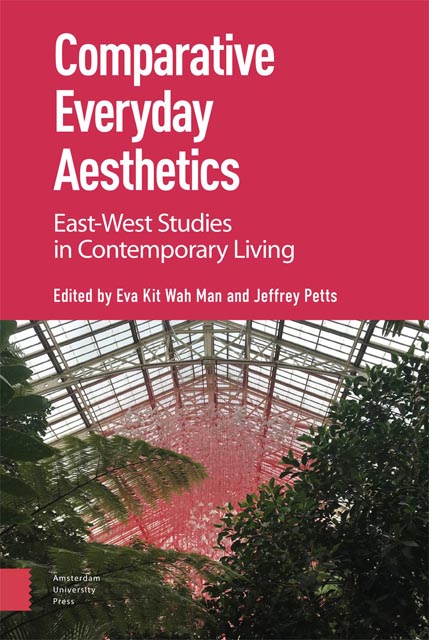Book contents
- Frontmatter
- Contents
- Living with Everyday Objects: Aesthetic and Ethical Practice
- Comparative Everyday Aesthetics: An Introduction
- Part 1 Living Aesthetically
- Part 2 Nature and Environment
- Part 3 Eating and Drinking
- Part 4 Creative Life
- Part 5 Technology and Images
- Part 6 Relationships and Communities
- Index
4 - The Aesthetics of Nature and the Environment: From the Perspective of Comparison between China and the West
Published online by Cambridge University Press: 18 October 2023
- Frontmatter
- Contents
- Living with Everyday Objects: Aesthetic and Ethical Practice
- Comparative Everyday Aesthetics: An Introduction
- Part 1 Living Aesthetically
- Part 2 Nature and Environment
- Part 3 Eating and Drinking
- Part 4 Creative Life
- Part 5 Technology and Images
- Part 6 Relationships and Communities
- Index
Summary
Abstract
The study of environmental and ecological aesthetics in China only began in the 21st century. But environmental aesthetics has a long history including the design of Chinese gardens and the practice and the evaluation of ancient Chinese landscape paintings. Comparing the aesthetic discourses on nature in China and in Europe, this essay lists Western discourses on the beauty of creation, of the sublime, and of the picturesque. Chinese discourses of the beauty of the nature have undergone a discursive development, which has formed a transformation of the discipline of aesthetics. From the appreciation of the beauty of nature in ancient times to contemporary ecological and environmental aesthetics, discourses in both cultures demonstrate similarities and differences. Understanding contemporary schools of Chinese aesthetics, from subjectivism to the materialists, shows that an historical analysis has positive implications for our understanding of the aesthetics of nature in both eastern and western cultures.
Keywords: environmental aesthetics, Chinese gardens, Chinese landscape painting, natural environment
There are both similarities and differences between contemporary ecological and environmental aesthetics and the appreciation of the beauty of nature in ancient times. Likewise, the Chinese appreciation of nature and the environment is similar to and different from that of Europeans and Westerners. A historical analysis of the reasons for the formation of these similarities and differences has positive implications for our understanding of contemporary aesthetics, especially that of everyday life.
Contemporary Western environmental and ecological aesthetics and relevant research in China
In contemporary Chinese aesthetics, it is possible to divide discussions on nature and the environment into two stages, the first of which was the discussion on natural beauty, which lasted from the 1950s to the 1980s.
There were two main categories of views on the beauty of nature at this stage. A believer in objective beauty, Cai Yi (1906–1992) represented views of the first category. For him, some natural objects are beautiful, and some are not, and the principle distinction between the former and the latter resides in their “typicalness.” A concept imported from the West, “typicalness” had initially been used in the realm of arts and had referred to characters in literary works. In his system of aesthetic thought, Cai Yi transplanted the concept of “typicalness” to animals and even to plants, arguing that these living beings could be “typical.”
- Type
- Chapter
- Information
- Comparative Everyday AestheticsEast-West Studies in Contemporary Living, pp. 91 - 106Publisher: Amsterdam University PressPrint publication year: 2023

